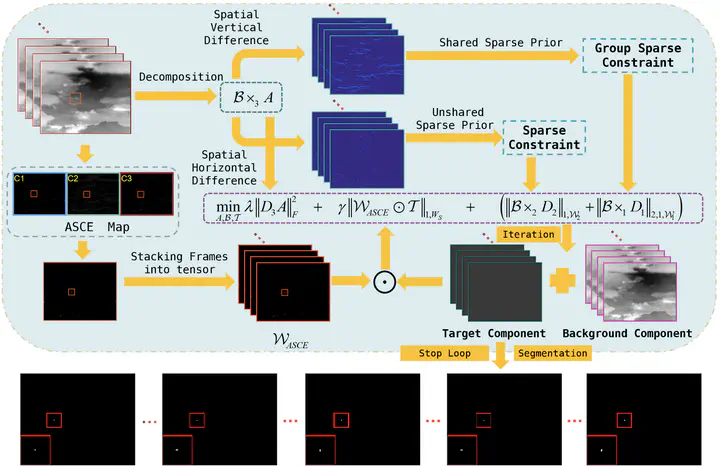Sparse Prior Is Not All You Need: When Differential Directionality Meets Saliency Coherence for Infrared Small Target Detection

Abstract
Infrared small target detection is crucial for the efficacy of infrared search and tracking systems. Current tensor decomposition methods emphasize representing small targets with sparsity but struggle to separate targets from complex backgrounds due to insufficient use of intrinsic directional information and reduced target visibility during decomposition. To address these challenges, this study introduces a Sparse Differential Directionality prior (SDD) framework. SDD leverages the distinct directional characteristics of targets to differentiate them from the background, applying mixed sparse constraints on the differential directional images and continuity difference matrix of the temporal component, both derived from Tucker decomposition. We further enhance target detectability with a saliency coherence strategy that intensifies target contrast against the background during hierarchical decomposition. A Proximal Alternating Minimization-based (PAM) algorithm efficiently solves our proposed model. Experimental results on several real-world datasets validate our method’s effectiveness, outperforming ten state-of-the-art methods in target detection and clutter suppression. Our code is available at https://github.com/GrokCV/SDD.